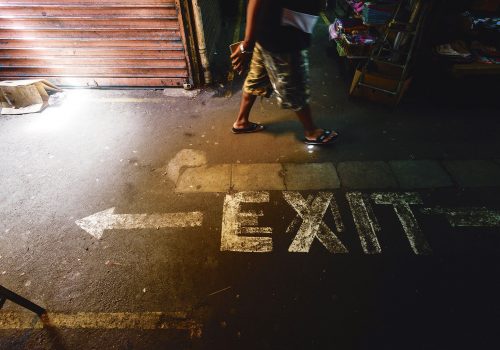Fragments is a photographic collection produced in the Indian Ocean, based on creative residencies. For each issue 4 photographers and a writer are invited in a place of the Indian Ocean (a city, a village, a neighborhood). Their only constraint is this imposed geographical space. Then, they are free to create an original documentary creation.
Meeting with his initiator, the independent photographer Romain Philippon.
Cilou de Bruyn
How did the idea for this collection of Fragments magazines came from?
From a collective desire to create a broadcast medium for the authors of the area. We first thought of the classic magazine, having as a model the magazine 6months, but this kind of projects was too cumbersome to manage. The idea of a model based on creative residencies presented itself to us, and finally seemed more adapted to our realities. We are trying to build a team of writers whose writings will coexist in the book. All sensibilities interest us, even if the background is mainly documentary. In each issue, when we can, we invite a photographer who does not live in the Indian Ocean, but the magazine is still dedicated to the authors who live there.
Your will is to get away from tourist clichés. Is it a “reportage” publication, is it a committed journal?
We are far from a reportage, simply because the work in residence is relatively long, and it forces the photographers to work on themselves. The result is quite intimate in a way. I hope the photos in each issue are specific to each place, each island. In the first 4 issues of Fragments, we sail between Reunion, Madagascar, and Mauritius. Each of these islands is radically different. And the authors who live there know how to recognize their specificities. It is also of interest to make local authors work. In a way, our journal is engaged. Already in the sense that photographers show what they want, without filters. Here, it’s not necessarily easy to do that. In Mauritius for example, tourism issues are very strong, and visual communication is very quickly locked. We therefore claim our share of freedom, and especially the possibility of a different prism, halfway between art and documentary photography. Fragments is anything but an atlas or guide to where we live. It is a portrait, collective and singular, with an assumed subjectivity.
Is there anything you are trying to demonstrate?
Above all, we have a strong desire to create a contemporary photographic material, that would give the stakes of our islands, and that would allow us to see our daily life. We are all tired of images of our region that are used in the media, whether local or national. The idea was simply to create a space of diffusion, free and independent. Finally, and of course, we are delighted if some photographers can better publicize their work.
Why associate an author with photographers?
The author makes it possible to make the link between the photographers, that is often essential. He is the pivot, and will help the reader (and also the art director) To navigate. The author is present for the duration of the residency, with the photographers, and is free in his or her writing, but most of the time, navigates with all the photographers according to their subjects.
Each issue is dedicated to a single location in which photographers work in residence – this 4th issue at Rose Hill. Why ?
Initially, it is more of a logistics and budget concern. The residence allowed us to condense the production costs, and we limited the time of creation, to produce an object quickly. Then we realized that the residence imposed interesting constraints for all. The limits of time and space were ultimately interesting points of reflection for everyone’s work. Authors do not usually know each other, so they have to work together and learn to confront each other’s eyes. It is each time very rich in exchanges. What connects photographers is often the meeting with the inhabitants. The links are quickly made. And then there is always a certain tenderness towards a place that we experience so intensely, next to colleagues we did not know when we arrived, and who are friends when we leave.
Introduce us Rose-Hill, why this place, what is emblematic about it?
Rose-Hill is not a coastal town, so not very touristy. This is what we were looking for on this island which is one of the most popular holiday destinations in the world. Then we had the opportunity to have support from the French Institute of Mauritius, which is located in Rose Hill, so that sealed our decision.
The question of the remuneration of photographers being very present in the news, how does it happen within Fragments?
For the Fragments project, we cover all residential expenses, including transportation. Then, a copyright contract is signed for each issue for the sale of books, even if it remains very symbolic. This project does not generate money, and its only goal is to create a framework of creative freedom for authors, and create connections that might not have been possible without. Very few authors in the Island of la Réunion live from their artistic work. Many people are forced to work for (businesses, weddings …).
What touches and drives you in this project?
The idea of collective work makes me happy. Loneliness is the only negative aspect of my job as a photographer. Thanks to this project, I meet great people, and it also allows us to have a good time, which is not negligible.
Your dearest wish?
That photography books do not disappear.
Useful information :
Fragments Review, Rose-Hill, Volume 4, Fall 2018
With the participation of: Karl Ahnee, Gillian Genevieve, Stéfan Grippon, Magali Paulin, Flavio Tarquinio,
104 color pages, 22x28cm, printed in France on matte paper,
Éditions Pendant ce tempsPublic price: 19 euros.
Pre-order on Ulule until September 24,
see: www.fragments.re
















